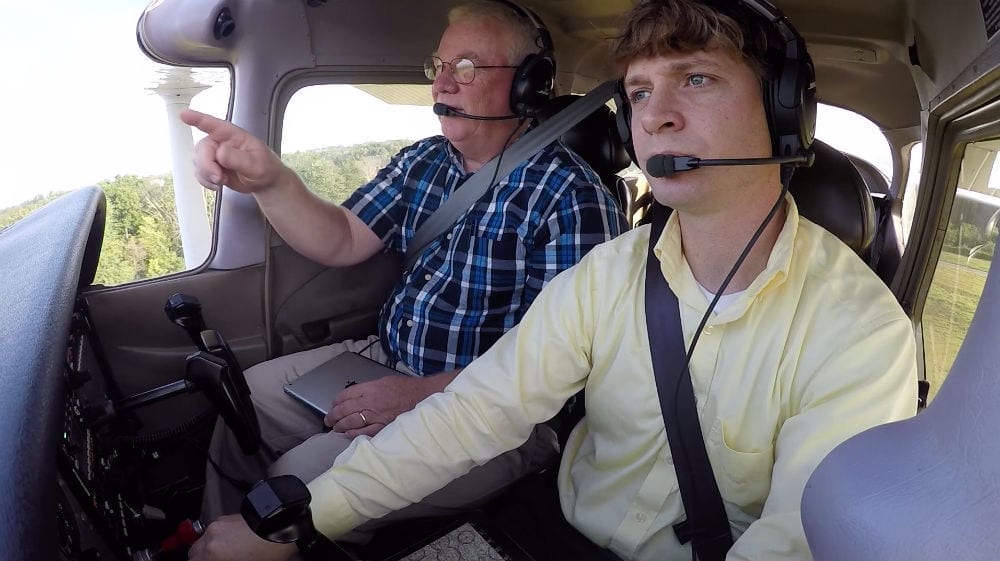The greatest weakness a student pilot has is that they lack the pilot skills to judge the quality of the super pilot assigned to be their instructor. Before first solo, the new student has all instructors on a throne. The CFI is god-like, certified by the government and endowed with such superior skills that they can “teach ME to fly.”
One of the first lessons I learned as a student pilot was that a good instructor explained everything before the student was expected to actually “do it.” I soon learned that not all instructors learned that basic fact of life.
On my first flight, my instructor said, “Hold the microphone so the bump is just touching your upper lip.” That is instruction at the rote level. I can recall and repeat that today fifty years later. But she did not explain what a noise canceling microphone was and why holding the mic close was necessary. That would have been a higher level of teaching (learning).
But a new student pilot doesn’t know all these facts. The student pilot puts 100% faith in the belief that their instructor is the greatest pilot and instructor since Charles Lindbergh.
Student pilots have life experience that can and should be used to evaluate their instructor. In my case, I knew how to drive a car, a dump truck, and a farm tractor. I could train a horse and paddle a canoe. These skills also included judging other people. Learning how to apply these people skills to judge your CFI is an important part of becoming a pilot and becoming an aviator.
Before my first solo I had the experience that most students face: a substitute instructor. My instructor, Debbie, was unavailable and I was assigned a substitute. This man was just a little older than I was and was leaving soon, a new hire with an “airline.”
On the one flight I had with this CFI I learned several things, most importantly that pilot skill is not the same as teaching skill.
After doing several stalls, this instructor took the controls and said, “What would you do if the airplane did this?” He then rolled the airplane into a 110 degree bank and said it was my airplane.
He taught me right then that some instructors missed the lesson plan that included briefing as part of instruction. I learned that when I became an instructor I would surprise a student only after instructing the student at a time before the surprise. The surprise isn’t instruction; it is a test to see if the prior instruction was learned.
After my first solo flight in the pattern, my instructor told me to “go practice.” So I did. It was fun being a pilot in command. After returning to the airport, my instructor asked me how the flight went. I said, “ It was great, I flew up to New Salem and looked Lincoln’s log cabin village over, saw the stern wheeler on the river, it was great.”
She said, “YOU CAN”T DO THAT!”
She had never instructed me on student pilot flight area limitations before the cross country endorsement. I learned that instructors might not tell you the rules you have to follow.
I took Sgt. Joe Friday to heart. Jack Webb as Joe Friday on the TV show DRAGNET would arrest a criminal while quoting the law they had broken. So I memorized the Federal Aviation Regulations by number, paragraph and title.
This skill paid off greatly when I took my check rides with the FAA for Chief Flight Instructor and Chief Pilot. When asked a question I would begin my answer with, “That’s 91.52,” and before I even got to the answer the FAA Inspector would go on to another question. It wasn’t long before the FAA Inspectors had fun having the new office inspector experience giving me a 135 six month check or a 141 Chief Flight Instructor check. The FAA re-wrote the FAR and the numbers have changed but I still know the intent and the words.
The point is, we all bring a human being to flight training and each instructor needs to tailor the instruction details to that individual. The student needs to bring their life experience because learning to fly will be different, even in an FAA-approved or military flight instruction course. Teaching an A&P mechanic or an aeronautical engineer how to pre-flight an airplane is different that teaching a piano tuner how to pre-flight. But each person should learn from their total life experiences to judge each flight.
Non-pilots watch the weather, non-pilots drive cars on icy roads. Golfers learn to judge the wind and weather. Drivers learn to adjust their driving to fit the road conditions. Safe drivers will probably be safe pilots and reckless drivers will be reckless pilots; it is human nature.




